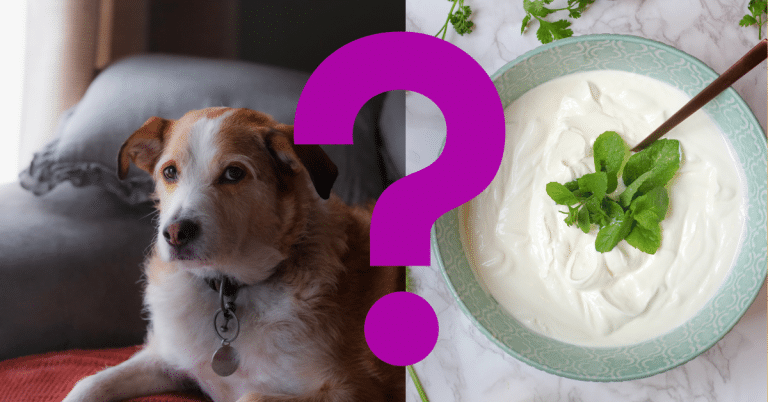Can Dogs Eat Raw Pork? A Vet’s opinion

Raw pork contains different bacteria, but can dogs eat raw pork?
It’s not advisable to give dogs uncooked pork. Salmonella or Trichinella, two potentially dangerous bacteria that can lead to food poisoning or parasitic diseases in dogs, may be present in raw pork. Thorough cooking can help reduce these dangers and render pigs safe for ingestion.
Let’s dive in:
Benefits Of Raw Pork For Dogs
While some supporters of raw diets for dogs assert that giving them raw pork may have some advantages, it’s important to remember that giving dogs any type of raw meat, including raw pork, comes with several serious hazards. The possible advantages of feeding raw pork to dogs are listed below, along with the concerns that may be involved:
- Nutritional Value: Those who support raw food diets claim that raw pork can offer critical elements like protein and fat that are crucial for a dog’s general health. A good supply of minerals, vitamins, and amino acids is pork.
- Fewer Additives: Due to the absence of preservatives, additives, and fillers that are frequently present in processed pet meals, some individuals consider raw pork to be a healthier option than commercial dog food.
However, it’s important to consider any dangers and disadvantages:
- Bacterial Contamination: Like other raw meats, pigs can be contaminated with dangerous germs like Salmonella and E. coli. These infections may make dogs sick, and they can potentially spread the bacteria to people or other animals.
- Trichinella spiralis, a parasite that can lead to trichinellosis in dogs, may be present in pork. The severity of this illness can result in several health problems.
- Nutritional Unbalance: It takes careful preparation and understanding of a dog’s dietary requirements to provide a nutritionally balanced raw meal for dogs. It’s doubtful that feeding raw pork alone will give a dog all the vital elements they need for good health.
- Feeding raw pork bones to dogs can be risky since they might splinter and cause choking or internal injury.
- Handling raw pork exposes people to health problems since they run the danger of contracting infections from handling tainted meat or encountering dog faeces.
- Food Safety Issues: To avoid contamination, processing and storing raw pork for a dog’s diet properly calls for strict food safety procedures.
In summary, the health hazards and possible dangers of feeding raw pork to dogs often outweigh any supposed advantages. A veterinarian should always be consulted if you’re thinking of feeding your dog a raw diet to make sure it’s secure, nutritionally sound, and appropriate for your dog’s particular health requirements. A safer and more practical choice for giving your pet a balanced and healthy diet is often commercially produced dog food or diets that have been recommended by a veterinarian.

How To Safely Give Raw Pork To Dogs
Because of the possibility of bacterial contamination and parasite transmission, feeding dogs raw pork might be dangerous. Here are some recommendations to take to reduce the hazards and ensure safer handling if you decide to continue looking into feeding your dog a raw diet:
- Consult A Veterinarian: Speak with your veterinarian before beginning a raw food diet. They can determine whether a raw diet is appropriate for your dog after evaluating their health and nutritional requirements.
- Select High-Quality Meat: Buy fresh, top-notch pork from a reputable supplier. Try to get human-grade meats that are free of chemicals and preservatives.
- Freeze the Meat: Freeze the pork at a temperature of -4°F (-20°C) for at least three weeks before giving it to your dog to lower the danger of parasites like Trichinella spiralis. Potential parasites may be killed during the freezing procedure.
- Safely Thaw: To stop bacterial development, thaw frozen pork in the refrigerator as opposed to at room temperature.
- Use A Separate Kitchen Area for handling raw meat and be sure you properly clean and sanitise all hands, utensils, and surfaces afterwards to prevent cross-contamination.
- Don’t Use Seasonings or marinades; just give your dog plain, unseasoned pork. Spices, herbs, and marinades should not be used since some ingredients might be toxic to dogs.
- Remove The Bones and fat from the meat; too much fat might irritate the digestive system. Remove any bones since they might split and cause internal injury as well as being choking risks.
- Feed Pork in Appropriate Portions: Pork should be fed as a part of a healthy diet that also includes other meats, organs, and vegetables. Make certain that you are supplying the appropriate ratios of protein, fat, and other nutrients.
- Watch Your Dog: When introducing a new diet to your dog, pay great attention to their health and wellbeing. Be alert for any indications of stomach problems or other negative effects.
- Practice Good Hygiene by properly washing your hands after handling raw pig or any other raw meat, and by being cautious whenever your dog comes into touch with you or your living area.
Remember that maintaining correct balance in a raw diet can be difficult and that not all dogs should consume it. It’s recommended to continue with commercially prepared dog food if you have any reservations or worries, or you may work with a veterinary nutritionist to develop a safe, nutritionally balanced raw diet plan for your pet.
Will Raw Pork Make A Dog Sick?
Giving a dog uncooked pork might potentially make them ill. Like other raw meats, raw pork may contain dangerous germs like Salmonella or E. coli, which can give dogs food poisoning and digestive problems. Pork may also be home to parasites like Trichinella spiralis, which can cause a disease known as trichinellosis.
Vomiting, diarrhoea, stomach discomfort, tiredness, fever, and other indicators of gastrointestinal distress can be symptoms of an illness brought on by eating raw pork. In extreme circumstances, it could cause dehydration and the need for veterinary help.
Furthermore, it’s typically not advised to give dogs raw pig bones since they might choke on them or injure them inside.
It’s normally recommended to steer clear of giving your dog any raw meat, including pig, to protect their health and safety. Instead, stick to a diet recommended by your doctor or a commercial dog food that is nutritionally balanced and complete. It’s crucial to speak with a veterinarian if you’re thinking about switching your dog to a raw diet to fully grasp the potential hazards and advantages as well as to get advice on how to prepare and handle raw food properly. To supply all the essential nutrients without the hazards associated with consuming raw meat, raw diets need to be carefully planned.

A Vet’s Summary
The prevailing consensus among veterinarians is that giving dogs raw pork should be discouraged owing to the potential health hazards. Although there is ongoing discussion about the health and safety of raw diets for dogs, including raw pork, among veterinarians, many veterinary associations, including the American Veterinary Medical Association (AVMA) and the American Animal Hospital Association (AAHA), agree that raw diets are unsafe.
Here are several justifications why many vets advise against giving dogs raw pork:
- Salmonella and E. coli are dangerous bacteria that can cause serious foodborne diseases in humans and canines. Raw pork, like other raw foods, is susceptible to contamination by these bacteria.
- Trichinella spiralis, a parasite that may cause serious health problems in dogs, is one of the parasites that can be found in pork.
- Nutritional Unbalance: It takes considerable preparation and understanding to provide a balanced raw meal that satisfies all a dog’s nutritional requirements. It’s improbable that feeding a dog only raw pork would result in a diet that is both complete and balanced.
- Raw pork bones can shatter and put dogs at risk for choking or internal damage.
- Food Safety Issues: To avoid contamination, handling and storing raw pork for a dog’s diet calls for stringent food safety procedures.
Many doctors advise giving dogs balanced commercial dog food or a diet that has been authorized by one instead of raw pig. In terms of lowering the risk of bacterial and parasite illnesses, these meals are usually seen to be safer than raw diets since they are designed to fit the unique nutritional needs of a dog. You can add probiotics to your dog’s daily routine. A healthy balance of gut bacteria may be maintained with the use of probiotics, supporting efficient digestion and nutrient absorption. For dogs that have sensitive stomachs, diarrhoea, or other digestive problems, they can be especially helpful.
A vet can offer individualized guidance based on your dog’s health, lifestyle, and specific needs if you are thinking about switching your dog to a raw diet. If you decide to pursue it, they can aid in your decision-making and direct you in developing a safe and nutritionally sound raw diet.
Videos To Watch
If you are wondering whether dogs can eat raw pork, watch this:
If you are wondering whether raw pork is harmful, watch this:






